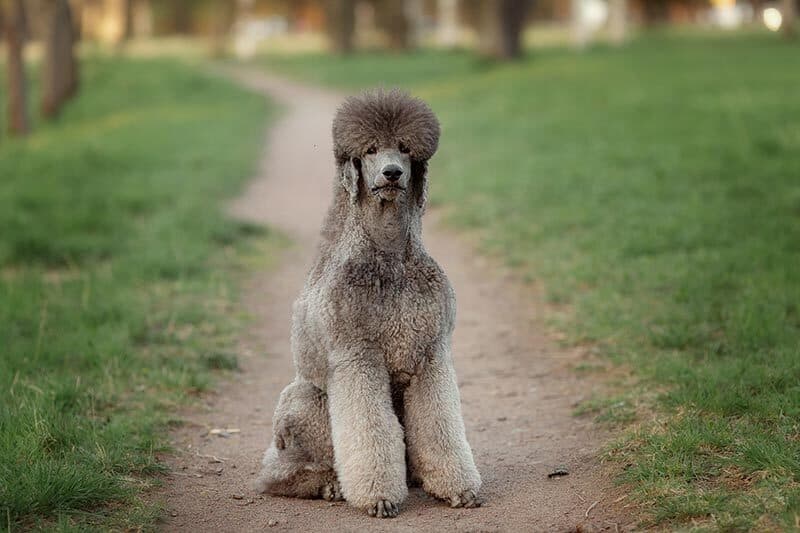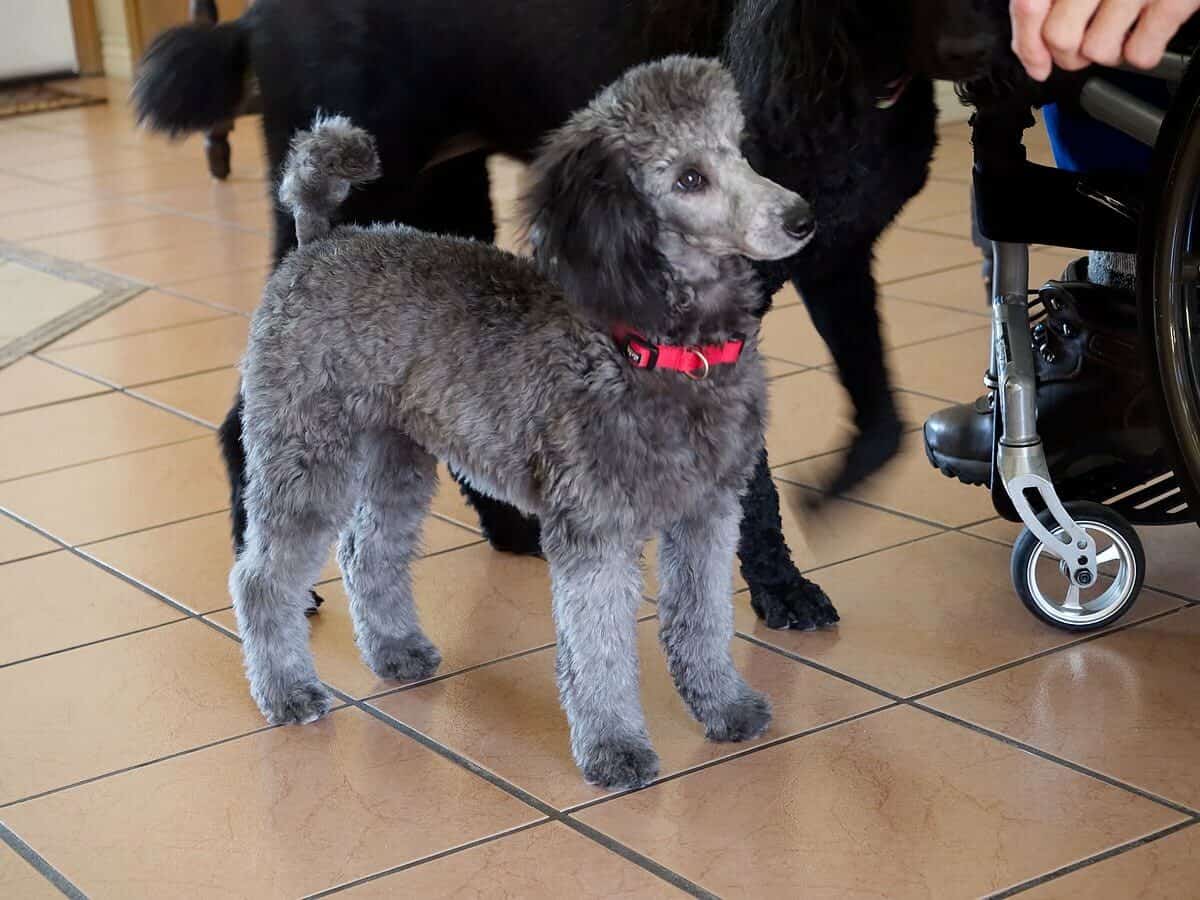
Silver poodles are a highly sought-after variation of the poodle dog breed, known for their rare coat coloring. While most poodles sport either black or white fur, silver poodles boast a lustrous coat of gray hair. This unique coloration is caused by a recessive gene, meaning that both parents must carry the gene in order for their offspring to inherit it. Silver poodles are relatively new to the world of dog breeds, having only been around since the early 1800s. Continue reading to learn more about this unique dog.
The Earliest Records of Silver Poodles in History
The first recorded silver poodle was born in Germany in the early 1800s. Poodles as a whole were originally bred as hunting dogs, and the poodle was used for retrieving waterfowl from lakes and rivers. The breed quickly became popular among German nobility and wealthy landowners.
The breed soon spread to other parts of Europe, including France, where they were known as “pudels.” In France, poodles were used as circus dogs due to their intelligence and trainability. They became popular pets among the upper classes in France, and their popularity spread to other parts of Europe and North America.
The silver poodle gets its striking gray coat from a recessive gene, meaning that both parents must carry the gene in order for their offspring to inherit it. While silver poodles are certainly beautiful dogs, they are also known for being highly intelligent and easy to train. They make great family dogs and are very friendly with children. They require regular exercise and grooming but are relatively easy to care for overall.

How Silver Poodles Gained Popularity in the United States
While silver poodles were originally bred in Germany, they quickly became popular in France and other parts of Europe. In the early 1900s, wealthy Americans began to import these dogs from Europe. They quickly rose in popularity among the American elite, and by the 1950s, silver poodles were one of the most popular breeds in the United States.
Today, silver poodles are still quite popular, although they have lost some of their status as a “trendy” breed. They are now considered to be one of the best family dogs due to their intelligence and trainability.
Formal Recognition of the Silver Poodle
The standard poodle was formally recognized as a breed by the American Kennel Club in 1887. The AKC is the largest and most well-known registry of purebred dogs in the United States.
The poodle breed standard lists three coat colors: black, blue, and silver. Silver is the rarest of the three colors and is caused by a recessive gene. This means that both parents must carry the gene in order for their offspring to inherit it.
Silver poodles are not currently recognized as a separate breed by the AKC. However, they are recognized by the United Kennel Club (UKC) and the Canadian Kennel Club (CKC).
Top 4 Unique Facts About Silver Poodles
- They’re the rarest of the standard poodles.
- They were originally bred as hunting dogs.
- They’re one of the smartest breeds of dog.
- They must inherit a recessive gene for both parents to have silver hair.
Does the Silver Poodle Make a Good Pet?
Yes, the silver poodle makes a great pet! They are intelligent, trainable, and make great family dogs.

Exercise Needs
The silver poodle is a high energy breed that requires regular exercise. A daily walk or run is a great way to keep your silver poodle happy and healthy. They also enjoy playing fetch and other active games.
Grooming Needs
The silver poodle has a thick, dense coat that requires regular grooming. The coat should be brushed at least once a week and clipped every 6-8 weeks. The coat can be clipped in a variety of styles, but the most popular is the “poodle cut,” which involves shaving the hair on the legs and body while leaving the head and tail area unclipped.
Health Concerns
The silver poodle is generally a healthy breed, but there are a few health concerns to be aware of. These include hip dysplasia, epilepsy, and von Willebrand’s disease. Silver poodles should be checked regularly by a veterinarian and have annual physical exams.
Feeding Requirements
The silver poodle should be fed high-quality dog food formulated for large breeds. Puppies should be fed three times a day, while adults can be fed twice a day. It’s also important to make sure your silver poodle has access to fresh water at all times.
The silver poodle is a beautiful, intelligent, and friendly breed that makes a great pet. They require regular exercise and grooming but are otherwise relatively easy to care for. If you’re looking for a loyal and loving companion, the silver poodle is a great choice!
Silver Poodle FAQs
How big do silver poodles get?
The silver poodle is a large breed of dog. Males typically weigh between 45 and 60 pounds, while females weigh between 35 and 50 pounds.
How long do silver poodles live?
The silver poodle has an average lifespan of 12-15 years.
Are silver poodles hypoallergenic?
The silver poodle is considered to be a hypoallergenic breed of dog. This means that they are less likely to cause allergic reactions in people who are allergic to dogs.
Do silver poodles shed?
The silver poodle has a dense, wooly coat that does not shed. This makes them a good choice for people who are allergic to dogs but still want to own one.
What is the difference between a silver poodle and a standard poodle?
The silver poodle is a variety of the standard poodle breed. The main difference between the two is coat color. Silver poodles have a silver-gray coat, while standard poodles can be any color.
Conclusion
The silver poodle is a beautiful, intelligent, and friendly breed that makes a great pet. They are the rarest of the poodle colors, which already makes them a special pup before you consider their friendliness and intelligence. Perhaps the coolest thing about poodles, though, is despite being stereotyped as prissy show dogs for the super wealthy, they actually have hunting dog roots. With a prestigious history and hardworking ancestry, they’re the best of both the performance and hunting worlds, all in one spectacular animal. Aren’t dogs the best?
Featured Image Credit: Valeriya Chistyakova, Shutterstock






